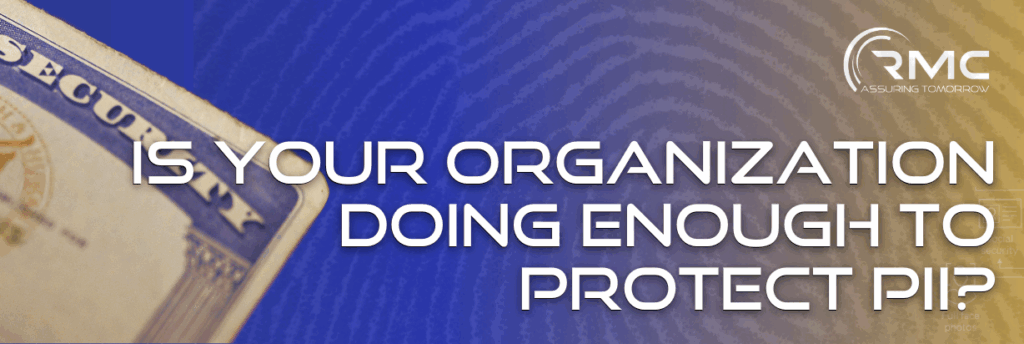Learn the essential strategies – and why understanding your data is the first step in safeguarding it.
Across industries, “Personally Identifiable Information” (PII) is deeply engrained in day-to-day processes. As organizations collect and manage more of this data, the risks associated with PII compromise have become impossible to ignore. PII refers to any information that can identify an individual either directly or indirectly.
- Direct identifiers include data like social security numbers, passport IDs, or driver’s license numbers, details that independently reveal an individual’s identity.
- Indirect identifiers, such as birth date or zip code, require additional data points to complete the identification but are still critical in the context of privacy risk.
While PII is widely referenced, its precise definition and required protections often vary based on context and jurisdiction. Foundational U.S. regulations such as the Privacy Act of 1974, the E-Government Act of 2002, and HIPAA (Health Insurance Portability and Accountability Act of 1996) provide federal standards, while many states build upon or clarify these laws through local legislation. For instance, California’s Consumer Privacy Act (CCPA) expands protections for consumers, giving them visibility and control over their personal data.
Why It Matters
The consequences of PII compromise are significant, both for individuals and the organizations responsible for safeguarding that data. Identity theft, fraud, and loss of privacy are just a few of the risks for individuals. For organizations, reputational damage and regulatory fines can follow any data breach, especially in highly regulated industries.
Compliance is a critical driver behind many data protection programs. Financial institutions, for example, often need to demonstrate adherence to a combination of standards including GLBA, PCI-DSS, SOC 2, and SOX, typically through annual audits and validation processes.
Laying the Groundwork for PII Protection
Before you can protect PII, you need to understand what you have, how it’s stored, where it lives, how it’s accessed, and how it moves through your systems. Mapping your data environment – what’s stored, where, how, and why – is an essential first step in implementing any meaningful safeguards.
Overlooking how data is stored can introduce serious risk. Several high-profile breaches have occurred because sensitive PII was kept unencrypted at rest, leaving vast amounts of personal information exposed once compromised.
From there, protecting the confidentiality, integrity, and availability of PII throughout its lifecycle should become a guiding objective. This means maintaining strong protections from initial collection through storage, access, use, and eventual disposal. Importantly, the level of protection applied should correlate with the potential impact of compromise.
Naturally, as protections increase, so too do associated costs and complexity. But the concept of defense-in-depth – implementing safeguards across multiple layers of an organization – remains a best practice for balancing risk and resilience.
Implementing a Multi-Layered Approach
Protecting PII isn’t the responsibility of a single tool or policy. It requires an ecosystem of administrative, operational, and technical controls that reinforce each other. The following table outlines some of the most widely accepted PII protection measures, categorized by the type of control they represent:
| PII Data Protection Measure | Administrative | Operational | Technical |
|---|---|---|---|
| Create privacy, security, and data handling policies, procedures, and rules of behavior documents | |||
| Conduct user awareness training to build knowledge, change behavior, and reinforce policies and practices. | |||
| Define and document the PII data elements maintained by the organization and where these are stored and accessed. | |||
| Encrypt sensitive information while stored on disk and during transmission. | |||
| Implement Data Loss Prevention (DLP) solutions monitoring for unusual or unauthorized access and data transfers. | |||
| Stop collecting PII data if not necessary to conduct operations or reduce the amount collected if possible. | |||
| Limit access and need-to-know to as few authorized individuals as possible. | |||
| Isolate and separate PII data from other network data if possible, for easier management, access control, and monitoring. | |||
| De-identify or obfuscate full or partial data elements so they no longer directly identify an individual. | |||
| Conduct regular audits to ensure continued compliance with regulatory requirements and to verify operational, procedural, and technical safeguards are still in place. | |||
| Conduct penetration testing to ensure protection measures are implemented and working as expected to prevent unauthorized PII data exposure or exfiltration. |
Each of these measures plays a distinct role, from policy development and user education to encryption, segmentation, and regular auditing. When layered together, they create a more resilient environment for managing sensitive information.
Getting Started: Resources and Recommendations
For those looking to strengthen their organization’s approach to PII, a good starting point is NIST Special Publication 800-122, which offers clear guidance on identifying PII, assessing its impact, and building a privacy-focused framework. It also provides templates and best practices for handling incidents and building response plans in the event of a breach.
PII protection is a continuous effort requiring commitment, visibility, and strategic investment. By taking proactive steps today, organizations can avoid costly missteps tomorrow and help preserve trust in their systems, services, and security posture.
How can RMC help your organization?
Contact us today: [email protected]
Be sure to follow RMC on LinkedIn, and sign up for the RMC Newsletter to stay apprised of industry insights and topical advice on establishing cyber resiliency in IT and OT environments.
